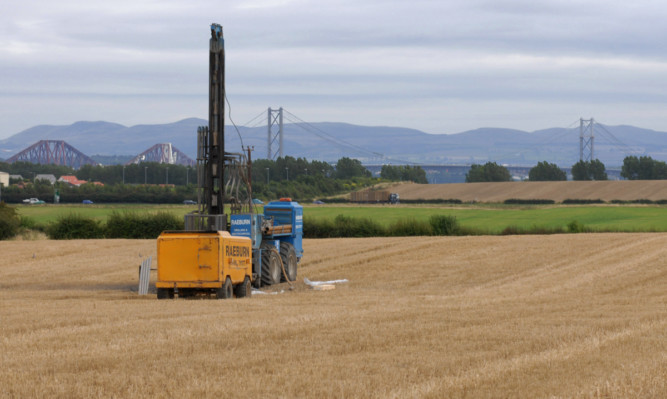A tunnel under the Forth could have avoided the chaos brought about by the closure of the Forth Road Bridge, it has been suggested.
Members of the Forth Tunnel Action Group (ForthTAG) argued a decade ago that a tunnel would be cheaper to build and easier to maintain than a bridge, also pointing to the fact it would have had a lesser environmental impact.
That, of course, is history now as the Scottish Government elected to pursue a replacement bridge and is in the midst of building the Queensferry Crossing.
But while campaigners insist they have moved on from the episode, founder members and supporters of ForthTAG could be forgiven for looking back in anger.
John Carson, a construction engineer who led the team that designed and constructed the Skye Bridge, pushed for a tunnel for many years and has been critical of Transport Scotland’s handling of the current situation.
“I think the whole thing is a mess,” he said. “We’ve got a bridge that’s in a poor state, the Scottish Government knew about it and we’ve got a new bridge which might or might not open next year.
“You’ve just got to look at the Feta minutes to see there are huge issues with the bridge, the joint is beyond its usable life, and all the planned works were put back because of the cuts.
“There have been alarm bells ringing for years and Transport Scotland knew this.”
“I’ve said it before, with the new crossing coming, they gambled and lost.
“I just hope that politics doesn’t outweigh expert opinion when it comes to getting the bridge open again.” Two bridge and three tunnel options, including comparative costs, were considered as part of the Forth Replacement Crossing Study carried out between August 2006 and June 2007.
It concluded that a cable-stayed bridge option was significantly cheaper and could be delivered quicker, had the best benefit to cost ratio and had fewer risks associated with its construction.
However, ForthTAG campaigned for many years for a tunnel west of Rosyth and suggested back in 2007 that such a project could have been open by 2015.
It also argued at the time that estimates produced by the Scottish Government for a tunnel had been inflated.
“I firmly believed the tunnel would have been the best option but I’m not sure there is any merit in regurgitating the arguments again,” Mr Carson said.
“There were things in place at Rosyth and if a tunnel had progressed it would probably have been open by now.”
“But that’s all hindsight, and not relevant to the poor people in Fife who are struggling to get across the Forth at the moment.
“The project we had in mind not only had a road but would have had rail as well.
“There’s no doubt there will be a rail capacity problem in the coming years and they will have to have another crossing over the river.”
Fellow ForthTAG member Keith Giblett, who is a founder member of Queensferry and District Community Council, said he also felt at the time that the tunnel option was the “right one”.
“Everything that was talked about back then has been revisited in the last two or three weeks, and I think the situation we’re in is a very disappointing one,” he said.
“I just moved on from the fact that the Scottish Government decided to build a bridge and as chair of the community council I had to accept that and work with the officers and officials. It is what it is.
“There is far more credence building a bridge because you can see it coming out of the water.
“The tunnel is totally different, so I can understand why civil engineers and the Scottish Government got excited about building a bridge.
“However, at the end of the day it’s got a job to do and these things need to be traded off.
Speaking personally, I don’t think the right decision was made.”
Transport Scotland said the new crossing has a design life of 120 years and was deemed the best option.
“Ministers announced the Forth Replacement Crossing in 2007 following a study which examined a range of crossing options,” said a spokesman.
“These included suspension bridge, cable-stayed bridge and tunnel” said a spokesman. “The tunnel options included an immersed tube and a bored tunnel, however, the study concluded the most appropriate option was a cable-stayed bridge.
“The Queensferry Crossing includes reliability features with two lanes of motorway traffic in each direction as well as a hard shoulder, wind shielding which will reduce the potential for closure, cables which can be replaced without disrupting traffic and modern maintenance features. It remains on track to open in December 2016.”
